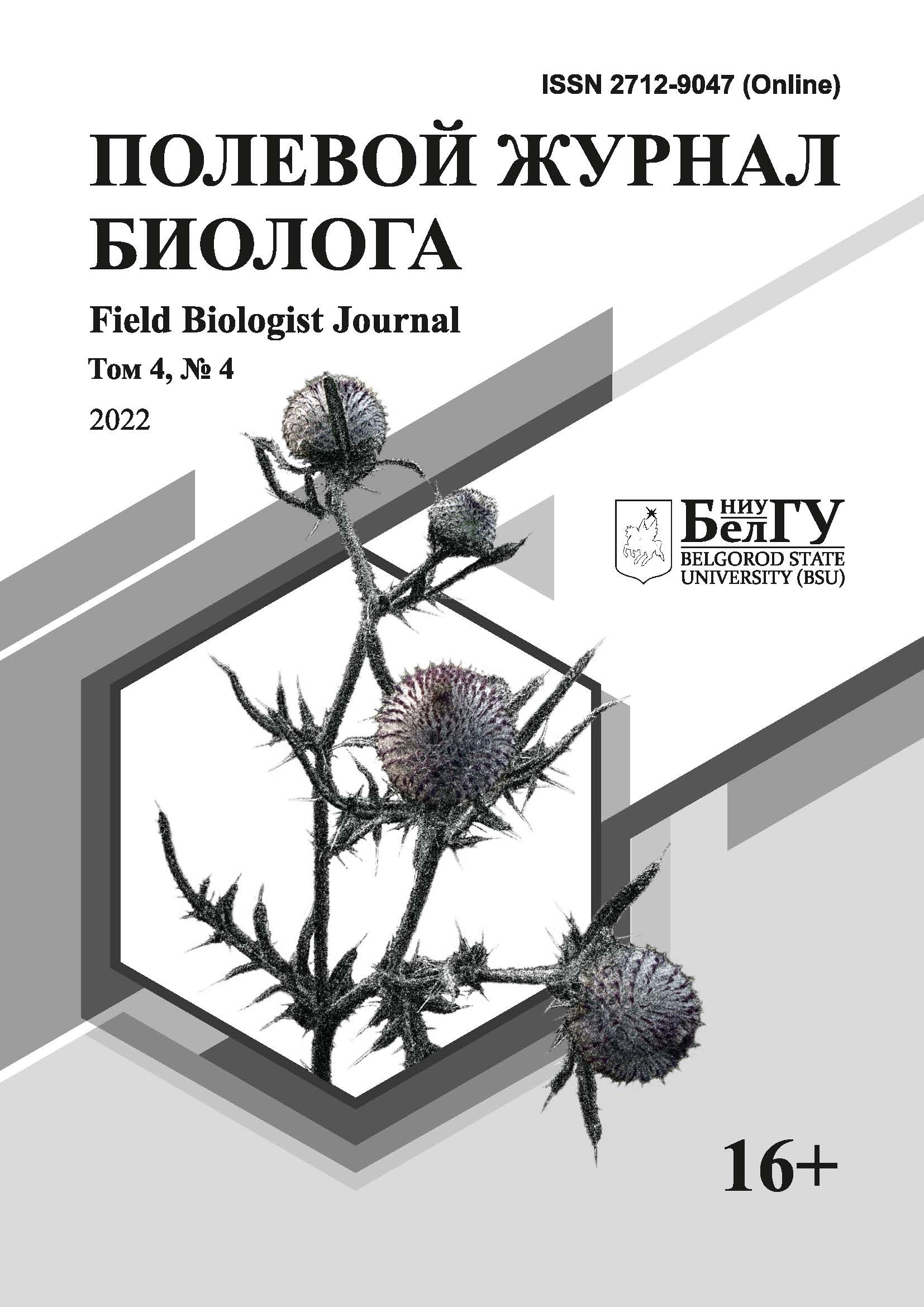Materials for Maintenance of the Red Data Book of the Yaroslavl Region, Based on the Results of Research on Vascular Plants in 2013–2014
DOI:
https://doi.org/10.52575/2712-9047-2022-4-4-293-303Keywords:
biodiversity, new records, rare species, vascular plants, herbarium, European RussiaAbstract
The original data on rare and protected vascular plant species of the Yaroslavl Region, collected in the Breytovsky, Myshkinsky, Nekouzsky, Pereslavsky, Rostovsky, and Rybinsky districts in 2013 and 2014, were summarized. New information on the distribution in the region is provided for 47 species, including
29 protected species, 16 species in need of regular monitoring, and 2 rare species lacking the conservation status. Among the protected species, in category 0 (Extinct), one species was recorded, category 1 (Endangered) – two species, category 2 (Vulnerable) – three species, category 3 (Rare) – 20 species, and category 4 (Data Deficient or Not Evaluated) – three species. The most important findings were of the two species listed in the Red Data Book of the Russian Federation (Isoetes echinospora and Dactylorhiza baltica); among those worthy of attention, were the findings of Potamogeton acutifolius and Sparganium gramineum, as well as Utricularia × neglecta in the transformed water bodies, where the species was widespread. It was not possible to confirm the modern state of the apparently extinct in the region Subularia aquatica.
Acknowledgements
Research was supported by Ministry of Education and Science of Russian Federation, project no. 121051100099-5.
Downloads
References
Атлас Ярославской области. 1964. М., Главное управление геодезии и картографии государственного геологического комитета СССР, 8+28 с.
Борисова М.А., Маракаев О.А., Казанова Н.К. 2020. Инвентаризация флоры долины реки Касть на территории государственного природного заказника «Ярославский». Научные труды Государственного природного заповедника «Присурский», 35: 18–24.
Гарин Э.В. 2015. Сосудистые споровые растения флоры Ярославской области. Труды Института биологии внутренних вод им. И.Д. Папанина РАН, 71(74): 48–59. DOI: 10.24411/0320-3557-2015-10004
Гарин Э.В. 2016. Материалы к Красной книге Ярославской области: Печёночница благородная (Hepatica nobilis Mill.). Международный журнал прикладных и фундаментальных исследований, 10–4: 587–590.
Гарин Э.В., Тихонов А.В. 2014. Флористические находки на карьерах Мокеихо-Зыбинского торфопредприятия (Ярославская область). Успехи современного естествознания, 12–3: 290.
Красная книга Российской Федерации (растения и грибы). 2008. М., Тов-во науч. изданий КМК, 855 с.
Красная книга Ярославской области. 2004. Ярославль, Изд-во Александра Рутмана, 384 с.
Красная книга Ярославской области. 2015. Ярославль, Академия 76, 470 с.
Маевский П.Ф. 2014. Флора средней полосы европейской части России. 11-е изд. М., Товарищество научных изданий КМК, 635 с.
Маракаев О.А. 2016. Орхидные (Orchidaceae Juss.) на особо охраняемых природных территориях Ярославской области. Известия Самарского научного центра Российской академии наук, 18(2): 136–140.
Новский В.А. 1959. Рельеф. В кн.: Природа и хозяйство Ярославской области. Ч. 1. Природа. Ярославль, Ярославское книжное издательство: 142–173.
Флёров А.Ф. 1902. Очерк растительности Переславского уезда. В кн.: Флора Владимирской губернии. М., Типо-литография Товарищества И.Н. Кушнерев и Ко: 65–128.
Ярославская область. 2022. Википедия. Свободная энциклопедия. URL: https://ru.wikipedia.org/?curid=4006&oldid=125976910 (дата обращения: 10.10.2022).
Belyakov E.A., Sakharova E.G., Sokolova A.S. 2020. The current state and dynamics of the flora of several small lakes of the Yaroslavl Region, Russia. Ecosystem Transformation, 3(4): 15–40. DOI: 10.23859/estr-200519
Frontova A.G. 2019. A grid-based database on vascular plant distribution in southern part of Yaroslavl Oblast, Russia. Lomonosov Moscow State University. Occurrence dataset https://doi.org/10.15468/dkepkh accessed via GBIF.org on 2022-10-15.
Plantarium. Plants and lichens of Russia and neighboring countries: open online galleries and plant identification guide. 2007–2022. URL: https://www.plantarium.ru/lang/en.html (accessed on November 7, 2022).
Seregin A.P., Bochkov D.A., Shner J.V. et al. 2020. “Flora of Russia” on iNaturalist: a dataset. Biodiversity Data Journal, 8: e59249. DOI: 10.3897/BDJ.8.e59249
WFO. The World Flora Online. 2022. URL: http://worldfloraonline.org/ (accessed on November 10, 2022).
##article.numberofviews## 312
##submission.share##
Published
How to Cite
Issue
Section
Copyright (c) 2022 Эдуард Витальевич Гарин, Дмитрий Андреевич Филиппов

This work is licensed under a Creative Commons Attribution 4.0 International License.



